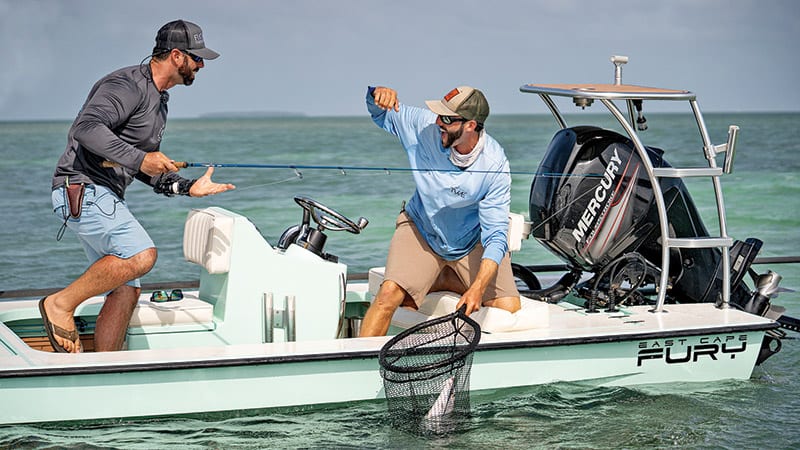Hey there and welcome back to another edition of Pro Tips. My name is Capt. Jonathan Moss, and I am a full time guide here in Central Florida and the host of the TV show, “The Captain’s Log.” In this article, I want to talk about the importance of proper fish handling for warm summertime conditions.
As you all know, summertime in Florida means very hot weather, which raises the water temperature significantly. The warmer the water gets, the less oxygen it contains. Just like us, fish need oxygen to survive. Think about how we humans become short of breath during strenuous activity and how that is even more affected (or noticable) in the summer months. The same thing happens with our fish. After a tough battle, our inshore species become exhausted, and without proper handling they will not survive their release.
What can we do? Here are 3 easy tips to remember:
- Have your landing net and pliers ready to go. Landing nets are very helpful in not only landing your fish but as a tool to support your fish in the water as it catches its breath. My preferred method after landing the fish with the net, is to quickly remove the hook and then place the fish back in the water for an opportunity to rest. Keeping the fish in the net allows it time to breathe and be supported without swimming away.
- Once the fish shows signs of improved strength, pull it from the net and take your photos. Be quick. The fish’s life is worth more than social media popularity. Storing your cell phone or camera in a place that is quick to access will assist in a speedy process. When holding your fish, do so without damaging its gills and hold on tight to avoid dropping it, which can hurt the internal organs of the fish. Additionally, wetting your hands prior to grabbing the fish will aid in preserving the fish’s protective slime. This is very important in the health of our estuary.
- Lastly, place the fish back in the water and firmly hold its tail. Doing this will keep the fish in your possession while it once again regains its breath and strength. It is crucial to take the time necessary to ensure that the fish is ready to go prior to release. Pushing the fish off or just tossing it back in the water increases the odds of the fish dying because of exhaustion or being eaten by a nearby dolphin because of its inability to swim away.
If we all do our part to not only practice catch and release, but also to properly handle and release our fish, our estuary and fish numbers will improve.
Pictured is my good friend, Capt. Nick Labadie, and me, after landing a nice Key West Bonefish. As mentioned in the article, we used the net to quickly land the fish. We were beyond excited as this was my first ever bonefish and the final fish needed to complete the Key West Slam of tarpon, permit and bonefish all in one day. We quickly snapped a picture and then performed a successful release of this incredible fish.
Tight Lines,
Capt. Jonathan Moss
Go Castaway Fishing Charters
www.gocastaway.com
(407) 760-8593


